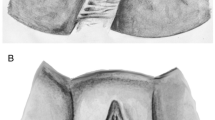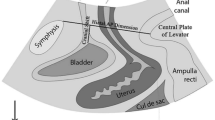Abstract:
Levator ani muscle function is traditionally evaluated by palpation or perioneometry. Recently, three different techniques of performing this task by translabial ultrasound have been described. The authors intended to validate these new methods by correlating results with assessments performed by perineometry and palpation. One hundred consecutive women were evaluated prospectively by a physiotherapist and a gynecologist. The physiotherapist undertook an assessment by palpation (Oxford grading) and perineometry (PeritronTM). The gynecologist performed translabial ultrasound. Both were blinded against each other’s results. Correlations between ultrasound and palpation were between 0.52 and 0.62, with displacement of the bladder neck agreeing most closely with palpation. As regards perineometry, correlations were 0.38 to 0.52, and again bladder neck displacement agreed best with the physiotherapeutic assessment. All correlations were highly significant. It appears that the assessment of levator function by ultrasound correlates strongly with vaginal palpation of muscle strength and perineometry.
Similar content being viewed by others
Author information
Authors and Affiliations
Additional information
Rights and permissions
About this article
Cite this article
Dietz, H., Jarvis, S. & Vancaillie, T. The Assessment of Levator Muscle Strength: A Validation of Three Ultrasound Techniques . Int Urogynecol J 13, 156–159 (2002). https://doi.org/10.1007/s192-002-8346-5
Issue Date:
DOI: https://doi.org/10.1007/s192-002-8346-5




